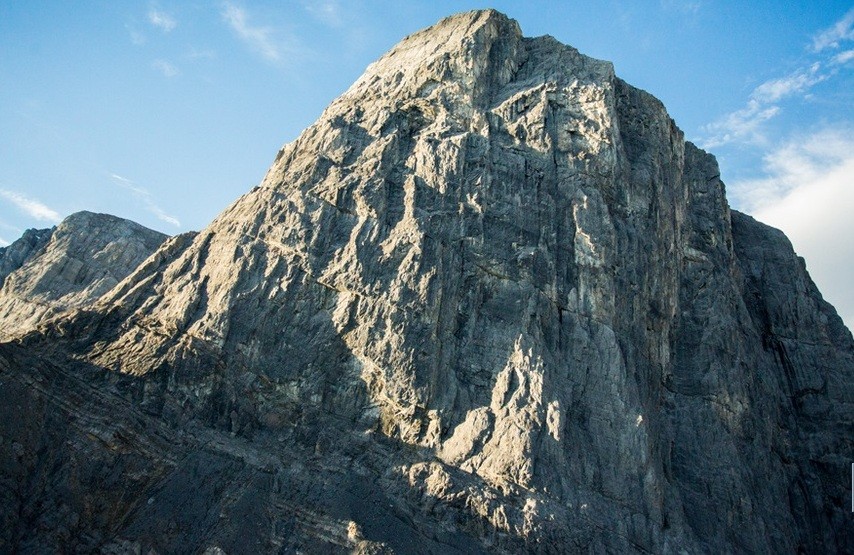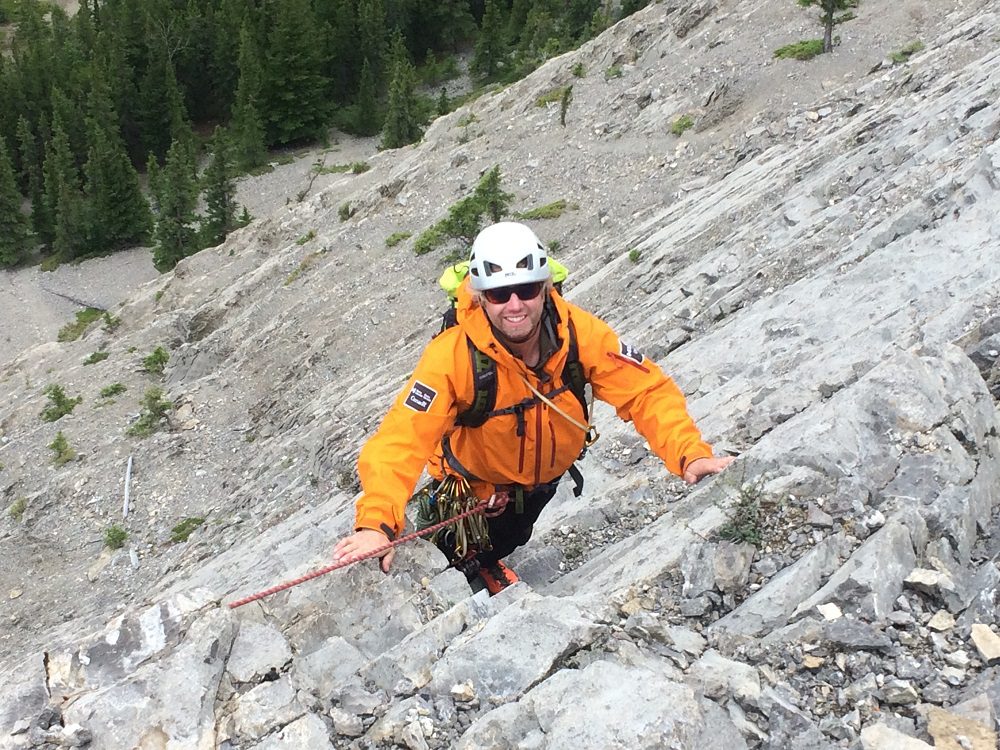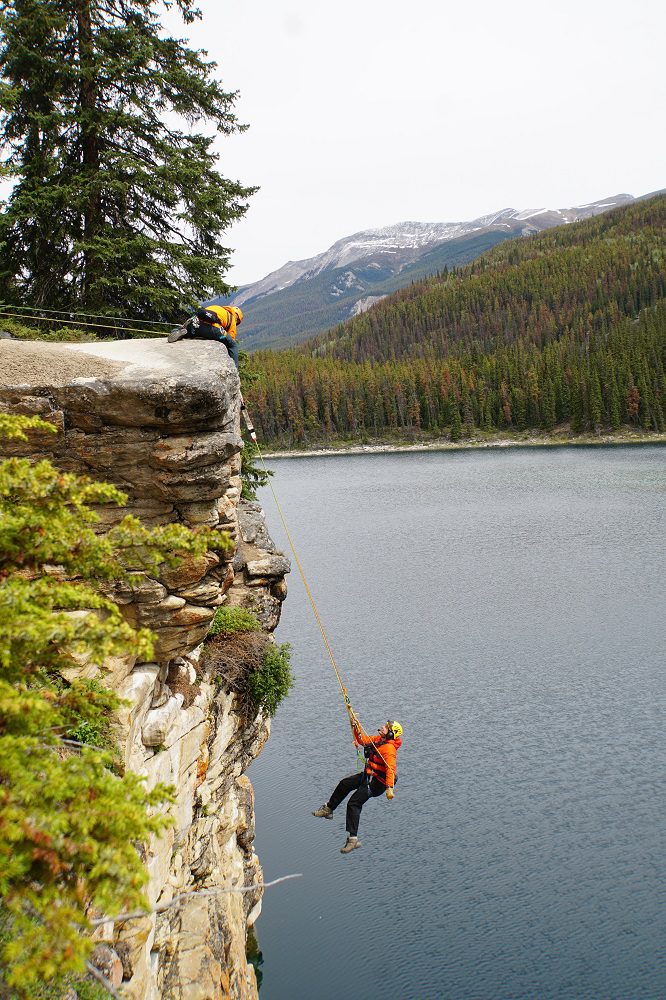Rock Climbing Safety Tips from a Rescue Specialist
Jordy Shepherd is a mountain guide based in Canmore with decades of experience in the mountains

Jordy Shepherd is a mountain guide based in Canmore who’s been involved in dozens of search and rescue calls over the years. His work experience includes being a Canadian Avalanche Association (CAA) course leader for avalanche search and rescue, a provincial park ranger, a national park warden, a mountain and industrial rescue specialist, a heli-skiing operations manager and much more.
What are the basics climbers should know about rescue? Be prepared to be self-sufficient and self rescue. Get the equipment and training for self and companion rescue and take a wilderness first aid course. At the very least, be able to call out for help (have one, or preferably two, reliable forms of communication), and stay comfortable for up to 48 hours if weather or other factors delay rescue. If an accident occurs, or if you are going to be delayed on the route, let the local search and rescue group know where you are, even if it seems that you will likely be able to self-evacuate. This will allow them to pre-plan in case you are not able to get yourselves out. It sucks to be rescued, but it’s even worse to not be rescued when you need to be rescued. File a trip plan with someone and instruct them to send help if you are overdue. Bring extra food and water, a tarp for shelter, warm and waterproof clothing, and a first aid kit that can stop bleeding and stabilize traumatic injuries. Tie knots in the ends of your rope when multi-pitch rappelling to avoid rapping off the end of your rope.
What should rock climbers do to prepare for multi-pitch rock routes? Research the route: bring a paper copy of the topo, including the approach and descent. Ensure you have adequate gear (ropes, rack, emergency equipment). Know what the best communication method is for that route (cell phone, satellite device, VHF radio with the local frequencies etc). Ensure that the route is within your technical abilities and experience. Best to start on easier, shorter, and more accessible routes first, to get your systems dialed, and then move on to the longer, harder, and more remote climbs.
What should climbers have on their rack for a multi-pitch safety? Rack up as per the route description. Long runners are often very useful to reduce rope drag. Bring a variety of protection pieces, specific to the type of route and rock that you are climbing. Ensure you have the appropriate sizes of gear on your rack. If you are less experienced and less confident, take a bit of extra gear, but be careful to not take so much gear that it will slow you down. Bring ropes that are appropriate for both the ascent and the descent. You need ropes that will allow you to descend the route in an emergency. Bring self/companion rescue items such as prussik cord, extra carabiners, small pulleys, and rope grab devices to add mechanical advantage for raising and lowering, an extra belay device (in case you drop one) and have the training to use the gear. Bring appropriate footwear. You won’t want your super-tight gym shoes on a multi-pitch climb. Wear helmets. Every climber should have a knife, so that you can cut pieces of cord/webbing/rope to build anchors for descending in an emergency.
What are some best practices when cragging? Be mindful of others around you. It’s a shared space. Deal with your human waste and garbage. Keep your gear stash tidy. Tie a knot in the end of your rope for every climb, to ensure that your belayer can’t let the end of the rope run through the belay device. Don’t leave ropes hanging on routes that you are not climbing. If you bring your dog, make sure they have food and water and are under control. Wear a helmet when you are at the crag, even when you are not climbing. Natural and human caused tree and rock fall is always a potential.
What is RECCO technology? You wear a simple RECCO reflector in your clothing or equipment. If searchers are looking for you, they use a RECCO search unit which sends out a signal. The RECCO reflectors will reflect the search signal back to the search unit, and the searchers hear a beep. The can then use the search unit to point your location.
Why is it important for climbers to wear RECCO? RECCO is inexpensive and very lightweight. It does not replace wearing an avalanche transceiver when you are in avalanche terrain, but it works very well along with wearing an avalanche transceiver. If you are not wearing a transceiver, having a RECCO reflector will help the SAR team find you faster, and with less exposure time for the searchers.

Is fast and light the best approach for alpine climbing? Fast and light is a good option for experienced alpinists. It’s best to work your way up to becoming a minimalist in the alpine. Start on shorter, easier, and less remote objectives to build up your experience and get your systems dialed. Then you can start to move more quickly in the mountains, on the longer routes. Always bring some first aid and emergency bivy gear, in case there is an emergency, as well as some form of emergency communications. Only go fast and light when the weather forecast is very good and the conditions on the route are also very good. This will reduce your risk and discomfort should you get delayed or become injured. If you do require evacuation, favourable weather will help the SAR team help you.
What should new alpine climbers know before heading up high? Get the training and gear and work up to heading out in the alpine. There are lots of ‘mini golf’ objectives that have an alpine feel but are not very long or exposed. Bring your alpine climbing gear on some of the more exposed ‘scramble’ routes to test your equipment and systems and become faster at transitions from hiking to climbing and back to hiking. Spend some time on low angle glaciers and snow slopes before attempting the steeper mixed alpine routes with complex glacier approaches and descents.
What does it mean when an alpine climb is graded 5.7. Should a 5.7 gym/crag climber try it? Alpine 5.7 is very different from gym/crag 5.7. If you are a 5.7 gym/crag climber and you want to become an alpinist, start with hiring a guide and taking a course. Or join the Alpine Club of Canada and sign up for introductory alpine climbs and courses. Go out with more experienced climbers, and do not alpine climb at the limit of your technical rock climbing ability.
What do search and rescue techs want everyday climbers to know? We want to know where you are, what the problem is, and how serious It’s. Any information about patient status, weather, access (by ground and helicopter), how prepared your group is, and any hazards in the area is very helpful. It helps us prioritize and prepare for coming to help you.



